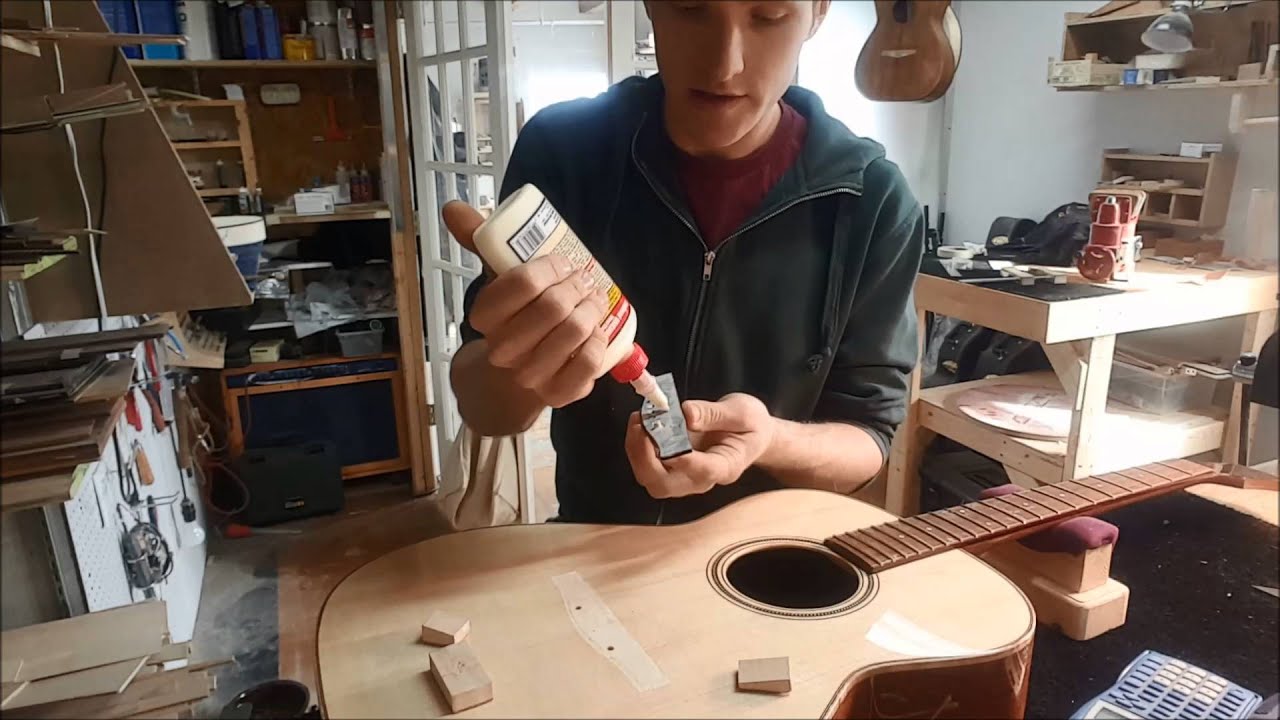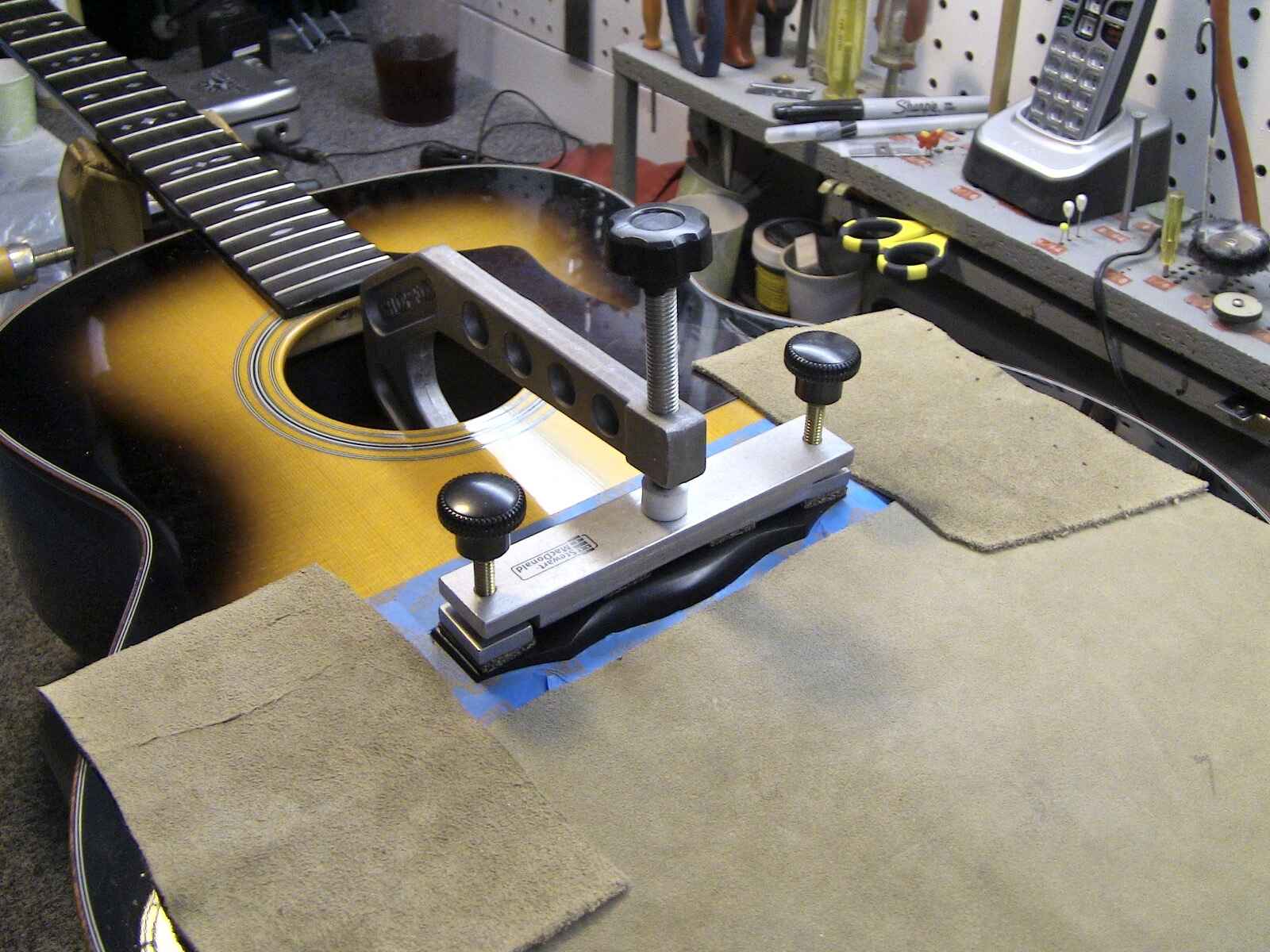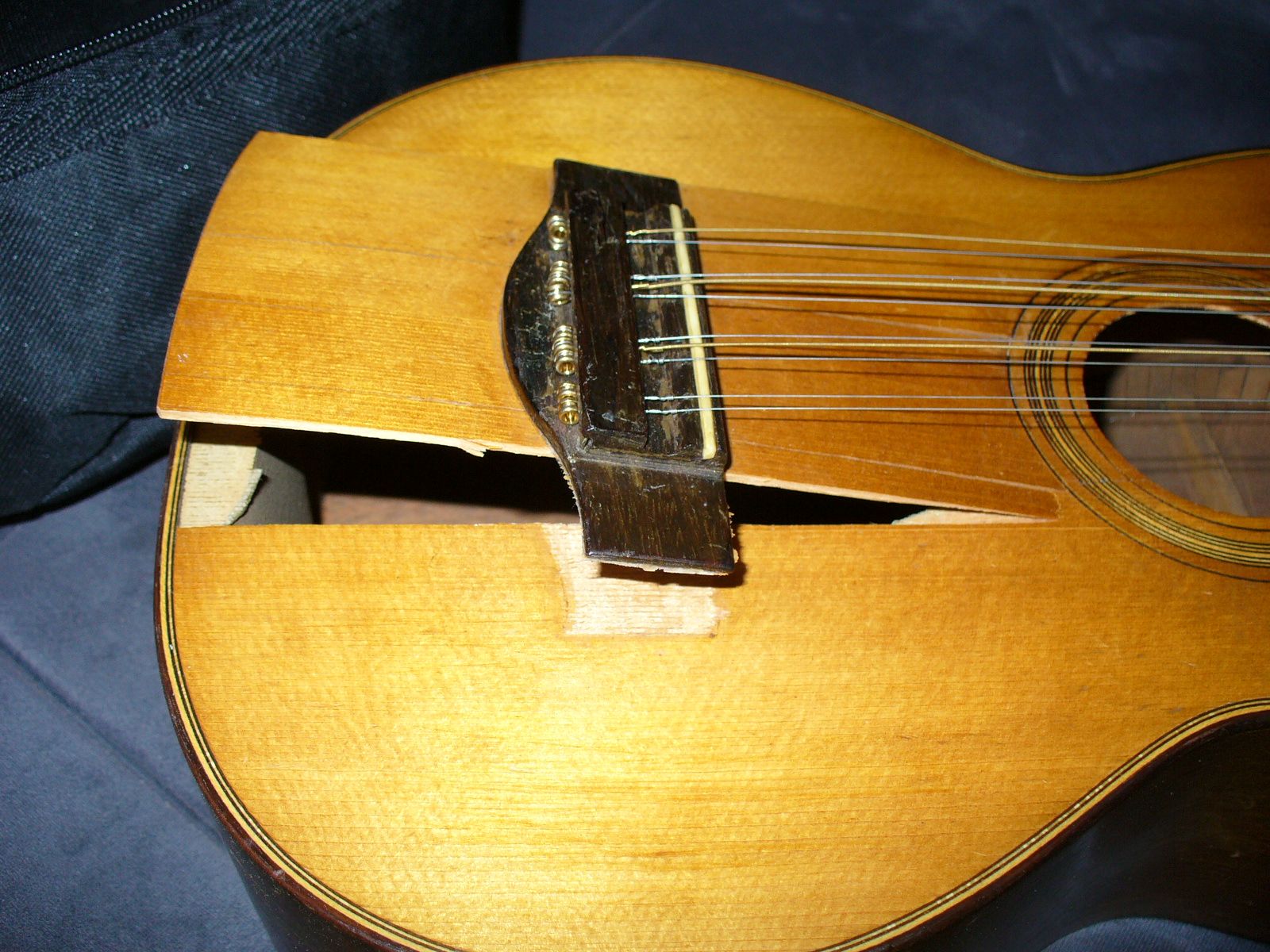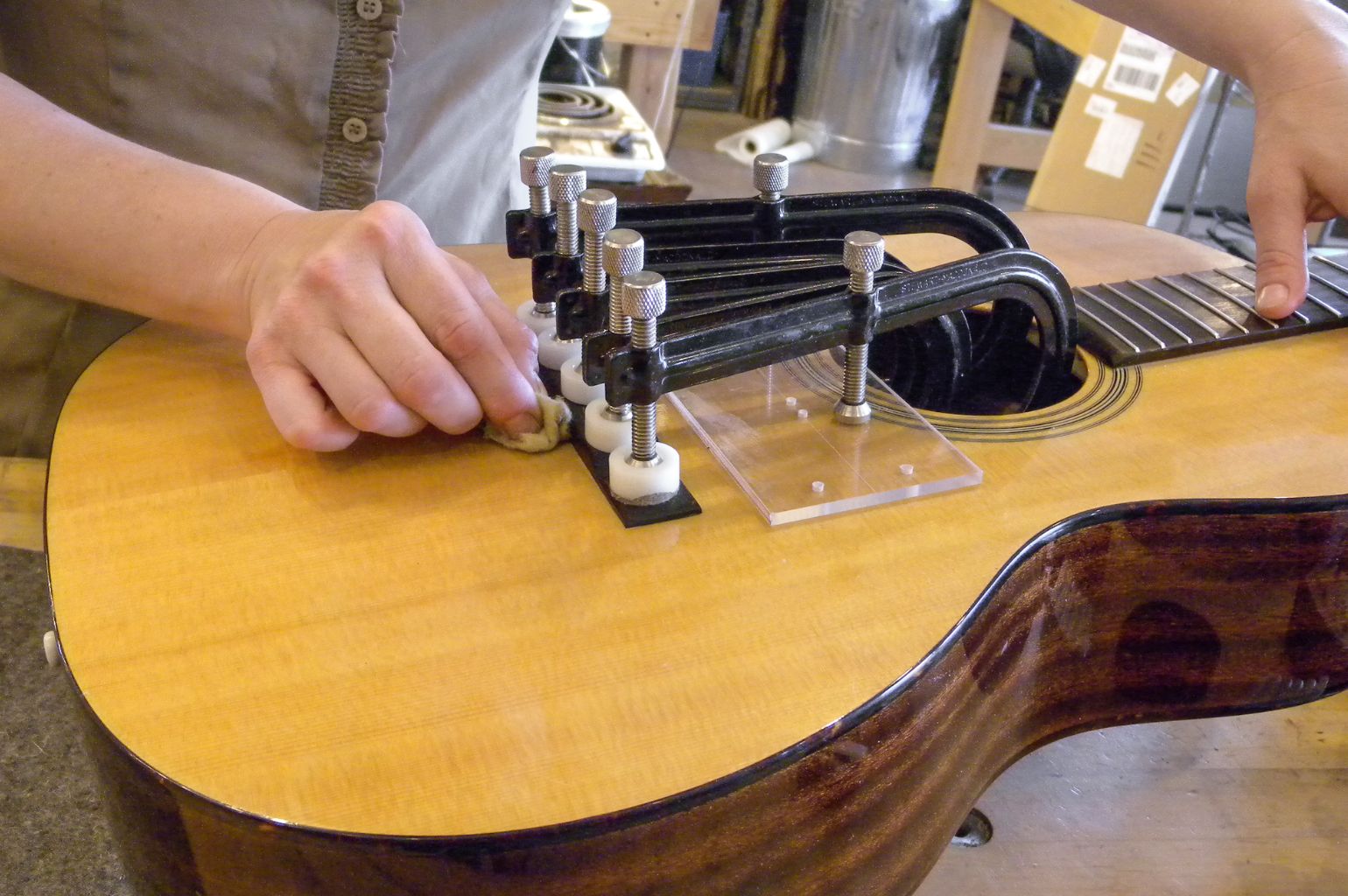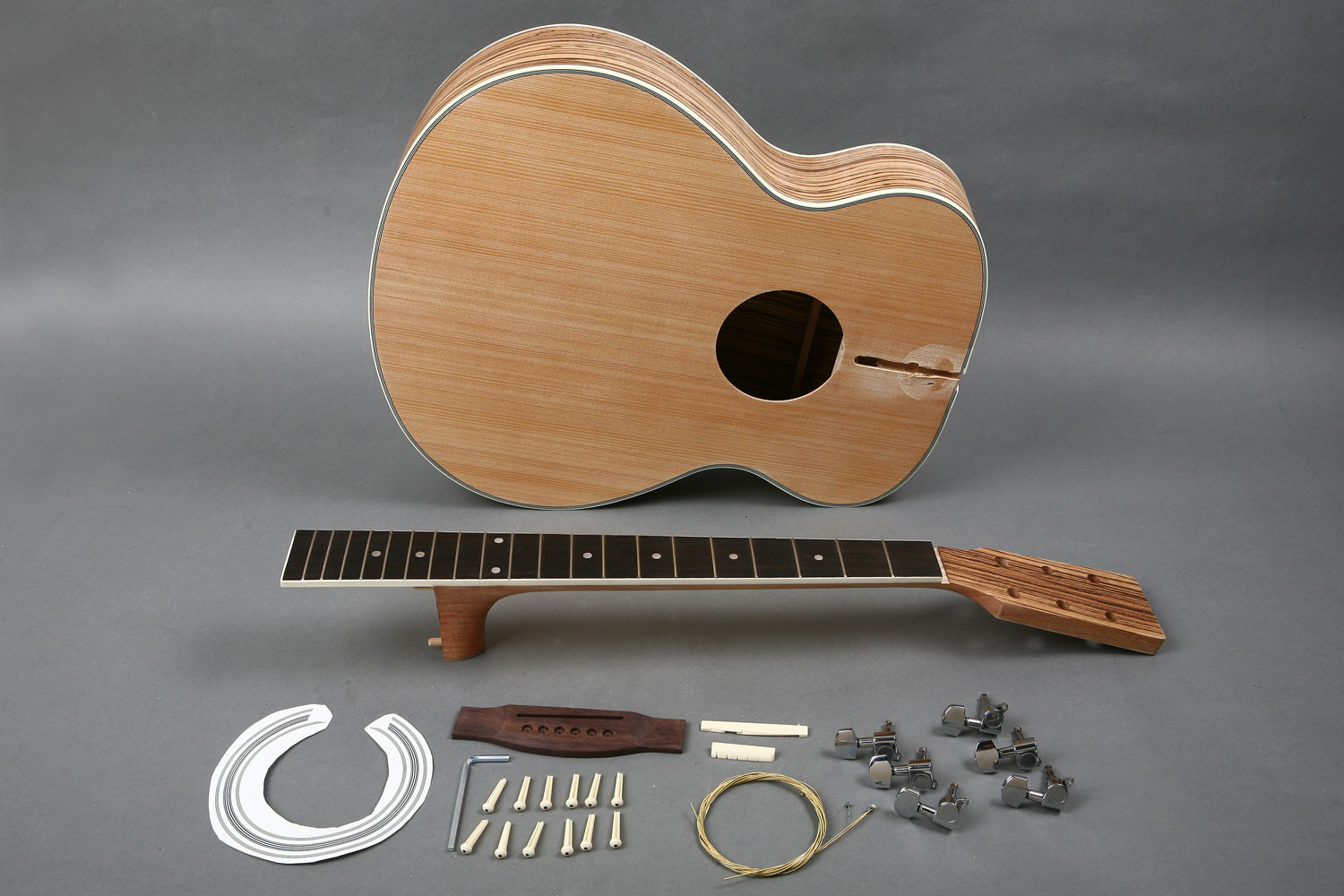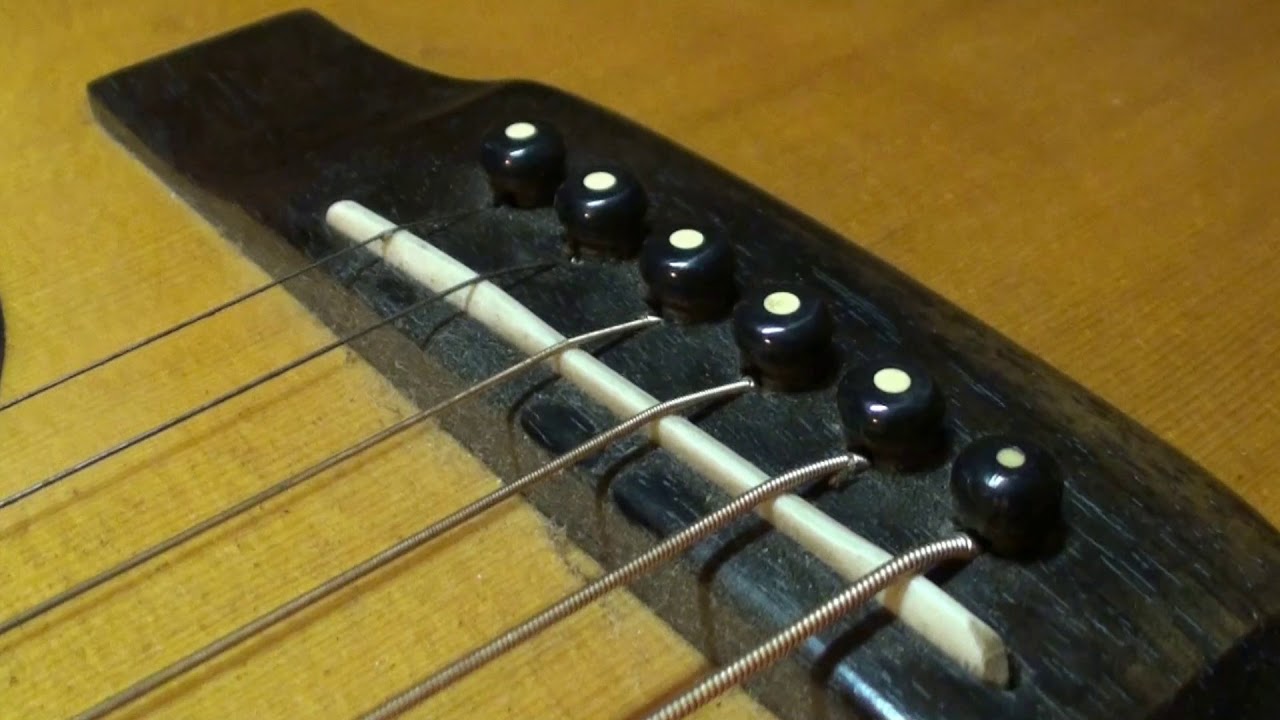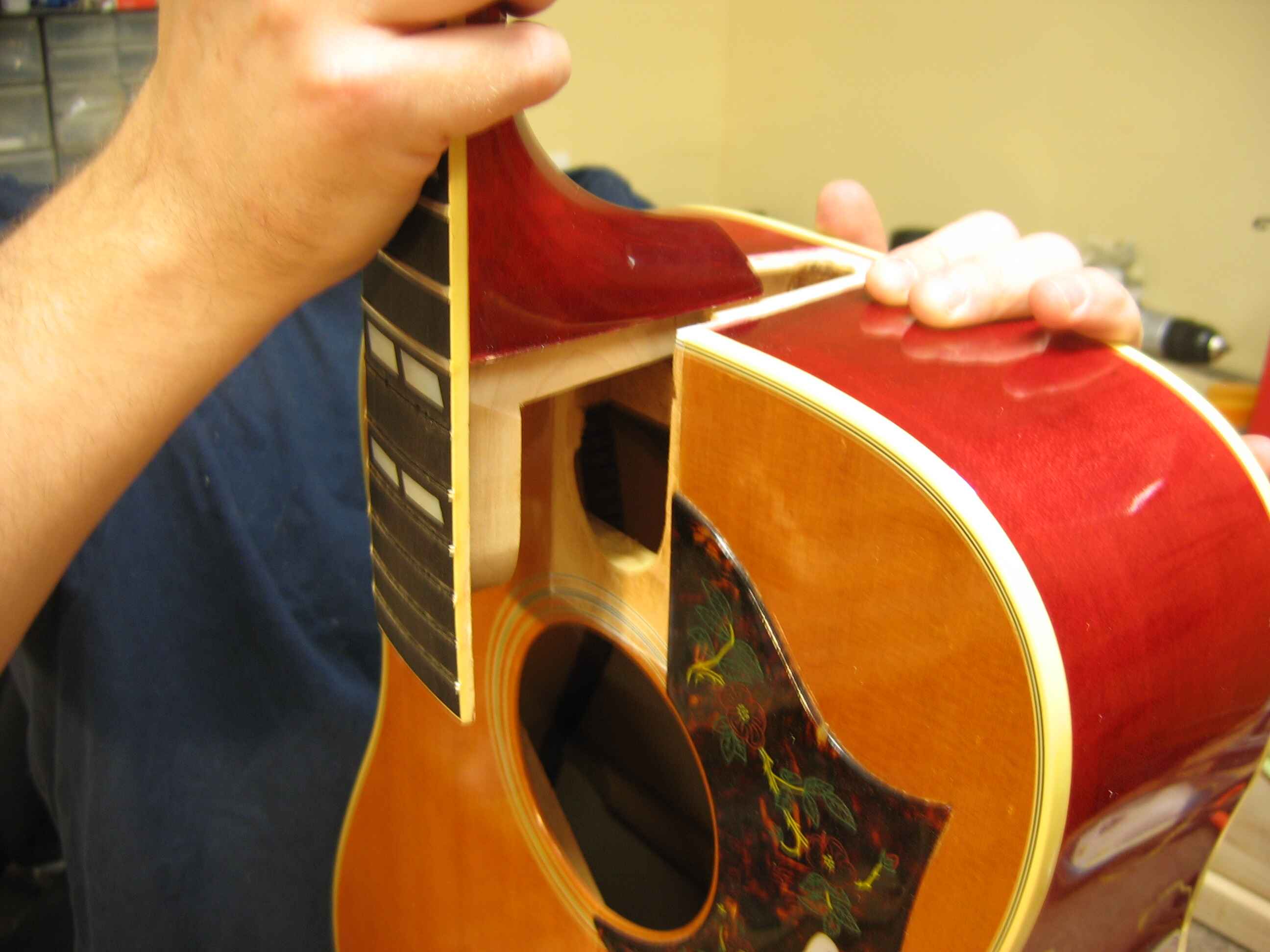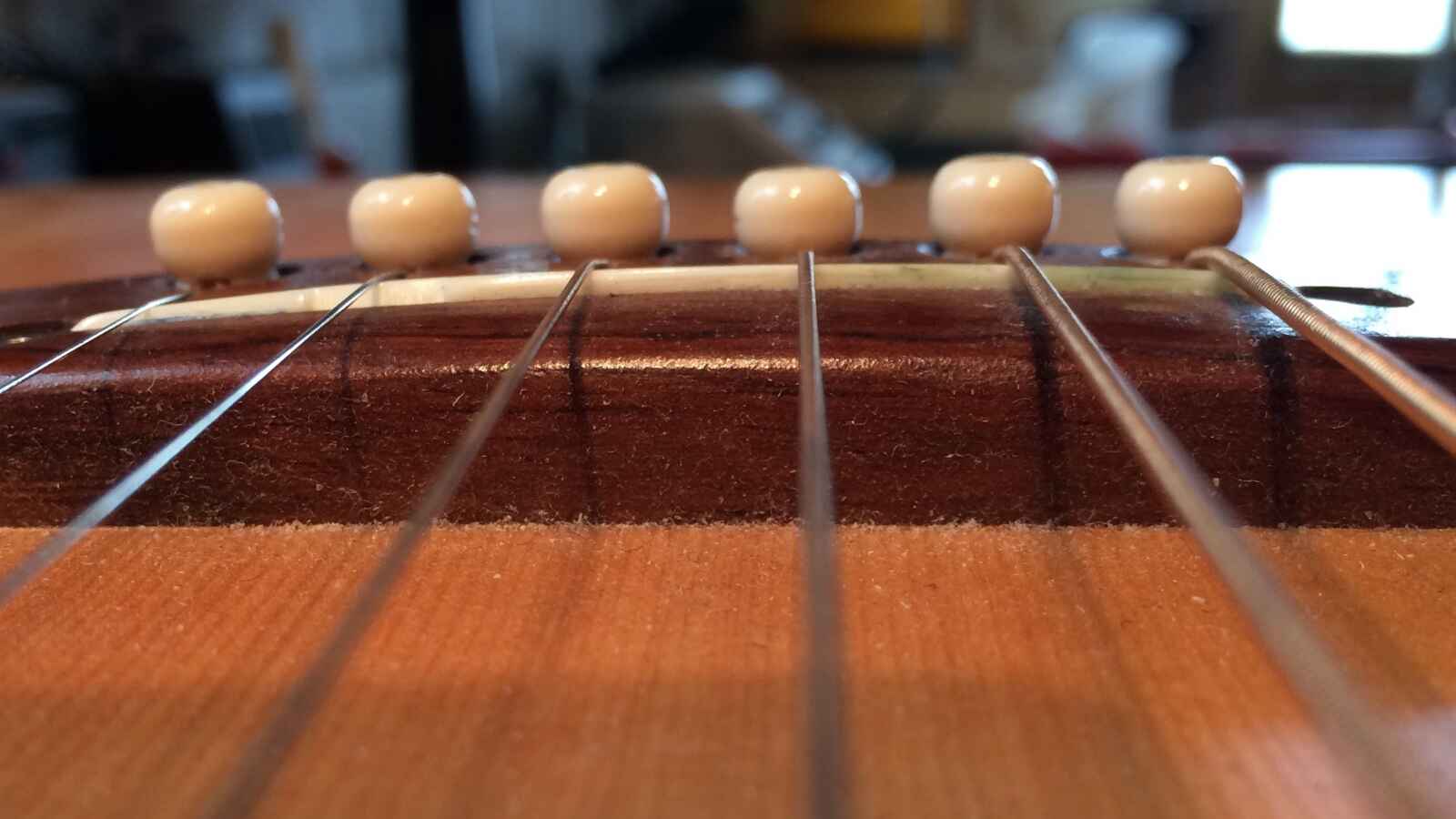Introduction
An acoustic guitar bridge is a critical component that connects the strings to the body of the guitar, transmitting the vibrations and contributing to the instrument’s overall tone and resonance. When it comes to securing the bridge to the guitar, choosing the right glue is essential. The type of glue you use can significantly impact the durability and sound quality of the guitar.
Various factors need to be considered when selecting the appropriate glue for an acoustic guitar bridge. These factors include the type of wood used for the bridge, the desired level of permanence, and the compatibility of the glue with the materials involved. In this article, we will explore the different types of glue commonly used for acoustic guitar bridges and provide guidance on selecting the best glue for specific bridge materials.
Before delving into the specifics, it is important to note that the information provided here is a general guide. Consulting with a professional luthier or guitar repair specialist is always recommended, particularly for complex repairs or restorations.
Now, let’s dive into the factors to consider when choosing glue for an acoustic guitar bridge.
Factors to Consider When Choosing Glue for an Acoustic Guitar Bridge
When selecting the glue for an acoustic guitar bridge, several important factors need to be taken into consideration:
- Wood Compatibility: Different glues have varying levels of compatibility with different types of wood. It is crucial to choose a glue that will bond well with the specific wood used for the bridge.
- Strength and Durability: The glue should provide a strong and durable bond that can withstand the tension and stress exerted by the strings. A secure bond is essential to maintain the integrity of the bridge and ensure its longevity.
- Reversibility: Depending on the circumstances, it may be necessary to remove or replace the bridge in the future. Some glues offer greater reversibility, allowing for easier removal without damaging the guitar’s structure.
- Application and Drying Time: Consider the ease of application and the time it takes for the glue to dry. This is particularly important if you are performing the bridge repair or replacement yourself and need sufficient working time.
- Non-Toxicity: Using a non-toxic glue is crucial for the health and safety of both the repairer and the guitar player. Look for glues that are specifically formulated for musical instrument repairs.
By taking these factors into account, you can make an informed decision when choosing the glue for your acoustic guitar bridge. Now, let’s explore the different types of glue that are commonly used for this purpose.
Types of Glue Suitable for Acoustic Guitar Bridges
There are several types of glue suitable for securing an acoustic guitar bridge. Each type has its own characteristics and advantages. Here are the most commonly used glue types:
- Hide Glue: Hide glue, also known as animal glue, is a traditional adhesive that has been used in luthiery for centuries. It is made from collagen extracted from animal hides and bones. Hide glue offers excellent bond strength, reversibility, and compatibility with wood. It can be heated and softened for disassembly. However, it requires mixing and careful temperature control during application.
- Wood Glue: Wood glue, such as aliphatic resin glue (commonly known as yellow glue or carpenter’s glue), is a popular choice due to its strong bond and ease of use. It is readily available, dries clear, and has good compatibility with various types of wood. Wood glue is not reversible, meaning the bridge cannot be easily removed or replaced without causing damage.
- Cyanoacrylate (CA) Glue: CA glue, also known as super glue or instant glue, is a fast-curing adhesive that forms a strong bond. It is commonly used for quick repairs and small bridge reglues. CA glue dries clear and provides good compatibility with different types of wood. However, it is not reversible and can be brittle over time.
- Epoxy: Epoxy is a versatile adhesive that offers exceptional strength and durability. It consists of two components, a resin and a hardener, which need to be mixed before use. Epoxy provides a strong bond, is resistant to moisture, and has excellent gap-filling properties. However, it is not reversible and may require more time for the glue to fully cure.
Each glue type has its own advantages and considerations, so it’s important to choose the one that best suits your needs and preferences. In the next sections, we will discuss the best glue options for specific types of acoustic guitar bridges.
Hide Glue
Hide glue, also known as animal glue, is a traditional adhesive that has been used in luthiery for centuries. It is made from collagen extracted from animal hides and bones, usually from cows or rabbits. Hide glue is known for its excellent bond strength, reversibility, and compatibility with wood.
One of the key advantages of hide glue is its reversibility. When heat is applied to the joint, the hide glue softens and can be easily disassembled, allowing for bridge removal or adjustment without causing damage to the guitar. This can be particularly beneficial for repairs or restorations that require precision or modifications in the future.
Hide glue also has excellent wood compatibility, making it suitable for a wide range of bridge materials. It forms a strong bond with wood fibers, ensuring a secure attachment. Additionally, hide glue is considered to transmit vibrations effectively, which can positively impact the tone and resonance of the guitar.
However, it is important to note that using hide glue requires some expertise and skill. It needs to be mixed with water and heated before application, and the temperature must be carefully controlled. If not handled properly, the glue may cause issues such as improper curing or weak bond strength.
Furthermore, hide glue has a relatively short working time, so it may not be suitable for beginners or those who are not experienced in working with this type of adhesive. It requires quick and efficient application before it starts to set.
In summary, hide glue is a traditional adhesive with excellent wood compatibility, strong bond strength, and reversible properties. It offers a classic and authentic approach to securing an acoustic guitar bridge. However, using hide glue requires expertise and careful application due to its short working time and the need for temperature control. If you are confident in your skills or working with an experienced luthier, hide glue can be an excellent choice for your acoustic guitar bridge.
Wood Glue
Wood glue, also known as aliphatic resin glue, is a popular choice for securing an acoustic guitar bridge. It is widely available and is known for its strong bond and ease of use. Wood glue is typically yellow in color, hence its common nickname “yellow glue” or “carpenter’s glue”.
One of the main advantages of wood glue is its strong bond strength. When properly applied, it forms a durable and secure connection between the bridge and the guitar’s body. This ensures the stability and longevity of the bridge attachment, even under the tension and stress exerted by the guitar strings.
Wood glue also has good compatibility with various types of wood commonly used for guitar bridges. It adheres well to wood fibers, creating a reliable bond. Additionally, wood glue dries clear, which is aesthetically pleasing as it does not leave visible residue or marks after application.
However, it is essential to note that wood glue is not reversible. Once it sets and cures, it forms a permanent bond, making it difficult to remove or replace the bridge without causing damage to the guitar’s structure. Therefore, it is crucial to apply wood glue with precision and accuracy to ensure proper alignment of the bridge with the guitar body.
Wood glue is relatively easy to work with, making it suitable for both experienced luthiers and beginners. Its longer working time compared to hide glue allows for more flexibility during the assembly process. It is important to note that proper clamping and sufficient drying time are necessary to achieve the desired bond strength.
Overall, wood glue is a widely used adhesive for acoustic guitar bridges due to its strong bond, ease of use, and compatibility with different types of wood. It is a suitable choice for those who prioritize durability and stability in their bridge attachment. If you are not planning to remove or replace the bridge in the future, wood glue can be an excellent option for securing your acoustic guitar bridge.
Cyanoacrylate (CA) Glue
Cyanoacrylate (CA) glue, commonly known as super glue or instant glue, is a fast-curing adhesive that provides a strong and quick bond. It is often used for quick repairs and small bridge reglues in the realm of guitar repairs.
One of the main advantages of CA glue is its fast-curing properties. It bonds quickly, allowing for efficient repairs and minimizing downtime. This can be particularly beneficial if you need to fix a loose or damaged bridge during a live performance or a recording session.
CA glue is known for its excellent compatibility with different types of wood, making it suitable for various bridge materials. It forms a strong bond with wood fibers, ensuring a secure attachment. Additionally, CA glue dries clear, which maintains the aesthetics of the guitar bridge without leaving visible marks or residue.
However, it is important to note that CA glue is not reversible. Once it cures, it forms a permanent bond that cannot be easily undone. This means that if you anticipate needing to remove or replace the bridge in the future, CA glue may not be the most suitable option.
Another consideration with CA glue is that it can be brittle over time. This can lead to potential issues if the guitar is subjected to strong vibrations or temperature changes. However, with proper application and adequate curing time, CA glue can provide a reliable and long-lasting bond on an acoustic guitar bridge.
CA glue is relatively easy to work with, as it does not require mixing or heating before application. It comes in various viscosities, allowing for better control and adjustment during the gluing process. However, it is crucial to handle CA glue with care and avoid contact with the skin as it can bond quickly and cause irritation.
In summary, CA glue is a fast-curing adhesive that forms a strong bond with wood. It is suitable for quick repairs and small reglues on acoustic guitar bridges. However, it should be used with caution, as it is not reversible and can become brittle over time. If you require a quick and reliable solution for minor bridge repair or reglue, CA glue can be a viable option.
Epoxy
Epoxy is a versatile adhesive commonly used for securing an acoustic guitar bridge. It consists of two components: a resin and a hardener. When mixed together, they create a chemical reaction that results in a strong, durable bond.
One of the main advantages of epoxy is its exceptional strength and durability. It forms a bond that can withstand the tension and stress exerted by the guitar strings, ensuring the long-term stability of the bridge attachment. Additionally, epoxy is resistant to moisture, making it suitable for guitars that might be exposed to humid environments.
Epoxy also has excellent gap-filling properties, which can be beneficial when working with bridges that have slight irregularities or gaps in the mating surfaces. It fills in the gaps and provides a secure bond, ensuring a solid connection between the bridge and the guitar body.
However, it is important to note that epoxy is not reversible. Once it cures, it forms a permanent and strong bond that cannot be easily undone without causing damage to the guitar. This means that any future repairs or adjustments to the bridge might be more challenging.
Epoxy requires proper mixing of the resin and hardener components in the correct proportions. Following the manufacturer’s instructions is crucial to ensure the adhesive’s effectiveness. Additionally, epoxy generally requires more time to fully cure compared to other glues. It is essential to allow sufficient drying time to achieve the maximum bond strength.
Working with epoxy requires precision and attention to detail. It is advisable to use clamps or other securing methods to maintain the proper alignment of the bridge during the curing process. Proper ventilation and safety measures should also be observed when handling epoxy, as it can emit fumes and can cause skin irritation.
In summary, epoxy is a versatile adhesive that provides exceptional bond strength and durability. It is suitable for securing an acoustic guitar bridge, especially in situations where gap filling or moisture resistance is desired. However, epoxy is not reversible and requires precision during application. If long-term stability and durability are priorities for your acoustic guitar bridge, epoxy can be a reliable choice.
Best Glue for Different Types of Bridges
The type of wood used for the bridge can influence the choice of glue to secure it to the guitar body. Let’s explore the best glue options for specific types of acoustic guitar bridges:
- Rosewood Bridge: Rosewood bridges are commonly found on acoustic guitars. For this type of bridge, hide glue is often considered the best choice. It provides a strong and reliable bond while allowing for future removal or adjustment if needed. The wood compatibility between hide glue and rosewood is excellent, ensuring a secure attachment.
- Ebony Bridge: Ebony bridges are known for their strength and dense composition. For ebony bridges, both hide glue and epoxy can be suitable options. Hide glue offers the advantage of reversibility, while epoxy provides exceptional bond strength and durability.
- Maple Bridge: Maple bridges are less common but can be found on certain acoustic guitars. Wood glue, such as aliphatic resin glue, is an optimal choice for maple bridges. It provides a strong bond and is compatible with maple wood, ensuring a secure attachment.
It is important to note that even though certain glues are recommended for specific bridge materials, the final decision may depend on other factors, such as personal preference, repair requirements, and the expertise of the repairer or luthier.
Consulting with a professional luthier or guitar repair specialist can provide invaluable guidance in selecting the best glue for your specific bridge material and situation. They can assess the wood characteristics, repair needs, and specific requirements of your acoustic guitar to recommend the most suitable glue.
By considering the type of bridge wood and consulting with an expert, you can make an informed decision on the best glue to secure your acoustic guitar bridge, ensuring a strong, durable, and reliable attachment that enhances the overall performance and resonance of your instrument.
Rosewood Bridge
Rosewood bridges are a common feature on acoustic guitars due to their rich tone and durability. When it comes to securing a rosewood bridge to the guitar body, choosing the right glue is crucial for a strong and reliable bond.
For a rosewood bridge, hide glue is often considered the best choice. Hide glue has been used in luthiery for centuries and offers several advantages for this type of bridge material.
One of the key advantages of using hide glue with a rosewood bridge is the excellent wood compatibility. Hide glue forms a strong bond with rosewood, ensuring a secure attachment. The wood fibers of the rosewood and the collagen-based hide glue work together to create a durable and reliable bond.
Another important advantage of hide glue is its reversibility. Hide glue can be softened with heat, allowing for the removal or adjustment of the bridge in the future if needed. This feature is particularly beneficial for repairs, restorations, or modifications that require precision or flexibility.
It is worth noting that working with hide glue requires some expertise and skill. It needs to be mixed with water and heated before application, and the temperature needs to be carefully controlled. If not handled properly, the glue may cause issues such as improper curing or weak bond strength. Therefore, it is recommended to seek the assistance of a professional luthier or guitar repair specialist when using hide glue with a rosewood bridge, especially if you are unfamiliar with the process.
In summary, hide glue is often considered the best glue for securing a rosewood bridge to an acoustic guitar body. Its excellent wood compatibility and reversibility make it a popular choice among luthiers and guitar enthusiasts. By properly applying hide glue, you can ensure a strong and long-lasting bond, preserving the integrity and enhancing the performance of your acoustic guitar with a rosewood bridge.
Ebony Bridge
Ebony bridges are renowned for their strength, density, and beautiful aesthetics. They are commonly found on high-end acoustic guitars and contribute to the overall tonal characteristics of the instrument. When it comes to securing an ebony bridge to the guitar body, choosing the right glue plays a crucial role in ensuring a solid and long-lasting bond.
For an ebony bridge, both hide glue and epoxy are commonly considered suitable options. Each type of glue offers its own set of advantages and considerations.
Hide Glue: Hide glue, with its excellent wood compatibility, forms a strong bond with ebony. It provides a reliable attachment and allows for future removal or adjustment if needed. The reversibility of hide glue can be particularly valuable for luthiers or repairers who anticipate the need for modifications or restoration work on the bridge in the future. However, working with hide glue requires experience and careful attention to temperature control during application.
Epoxy: Epoxy is a versatile adhesive known for its exceptional strength and durability. It provides a secure attachment for an ebony bridge and can withstand the tension and stress exerted by the guitar strings. Epoxy also offers excellent moisture resistance, making it suitable for environments where humidity is a concern. However, it is important to note that epoxy forms a permanent bond, and the removal or adjustment of the bridge in the future can be more challenging compared to hide glue.
When deciding between hide glue and epoxy for an ebony bridge, it may be helpful to consider the specific requirements and preferences of the guitar owner, the expertise of the repairer, and the desired level of reversibility. Consulting with a professional luthier or guitar repair specialist can assist in making an informed decision based on these factors.
Overall, both hide glue and epoxy are suitable glue options for securing an ebony bridge to the guitar body. Whether you prioritize the traditional and reversible nature of hide glue or the strength and durability of epoxy, both glues can provide a reliable and stable attachment for your acoustic guitar with an ebony bridge, enhancing its tone and overall performance.
Maple Bridge
Maple bridges, while less common than rosewood or ebony bridges, can be found on certain acoustic guitars. Maple is known for its dense and strong nature, making it an excellent choice for bridges that require stability and durability. When it comes to securing a maple bridge to the guitar body, choosing the right glue is essential for a secure and lasting bond.
For a maple bridge, wood glue, particularly aliphatic resin glue, is often considered the best choice. Wood glue offers several advantages for securing a maple bridge.
One of the main advantages of wood glue is its compatibility with different types of wood, including maple. It forms a strong bond with the wood fibers, ensuring a secure attachment between the bridge and the guitar body. This strong bond is crucial for maintaining the stability and integrity of the bridge, especially considering the tension and stress that the strings exert.
Furthermore, wood glue is easy to work with, making it suitable for both experienced luthiers and beginners. It does not require special mixing or heating and can be applied directly to the mating surfaces. The longer working time compared to other glues allows for sufficient adjustment and alignment before the glue starts to set.
However, it is essential to note that wood glue is not reversible. Once it fully cures, it forms a permanent bond. Therefore, precautionary measures should be taken to ensure accurate placement of the bridge during application. Disassembling or replacing the bridge in the future may require more advanced techniques and potentially result in damage to the guitar.
When working with a maple bridge, it is advisable to consult with a professional luthier or guitar repair specialist. They can provide personalized guidance and recommendations based on the specific requirements and characteristics of the maple bridge and guitar. Their expertise can help ensure a successful and secure attachment that enhances the performance and longevity of your acoustic guitar.
In summary, wood glue, specifically aliphatic resin glue, is often considered the best glue for securing a maple bridge to an acoustic guitar body. Its strong bond, compatibility with maple wood, and ease of use make it an ideal choice. By applying wood glue correctly and seeking expert advice when needed, you can achieve a reliable and long-lasting bond, allowing your maple bridge to contribute to the tone and resonance of your acoustic guitar.
How to Apply Glue to an Acoustic Guitar Bridge
Applying glue to an acoustic guitar bridge requires precision and careful attention to ensure a secure and long-lasting bond. Here are the general steps to follow when applying glue to an acoustic guitar bridge:
- Clean the surfaces: Before applying any glue, ensure that the surfaces of both the guitar body and the bridge are clean and free from dust, debris, and any old adhesive residue. Use a soft cloth or a gentle solvent if necessary. This will ensure proper adhesion.
- Choose the appropriate glue: Select the glue based on factors such as the bridge material, desired permanence, and personal preference. Consider the recommendations provided earlier in this article for the specific type of bridge you are working with.
- Apply the glue: Depending on the type of glue you are using, follow the manufacturer’s instructions for application. For hide glue, it may need to be mixed with water and heated to the appropriate temperature. For wood glue, epoxy, or CA glue, apply a thin and even layer on the mating surface of the bridge and the guitar body using a suitable applicator, such as a small brush or a glue spatula.
- Align and place the bridge: Carefully align the bridge with the pre-determined position on the guitar body. Ensure that the bridge is correctly centered and properly aligned with the fretboard and the soundhole. Apply gentle pressure to ensure good contact between the bridge and the guitar body.
- Clamp for sufficient pressure: Use clamps or other suitable methods to apply even pressure across the bridge. This helps ensure a strong and consistent bond. Place protective pads or blocks of wood between the clamps and the guitar body to prevent damage or indentation.
- Remove excess glue: After clamping, carefully wipe away any excess glue that may have seeped out from the edges of the bridge using a damp cloth or a wooden stick. It is important to clean the excess glue while it is still wet to avoid leaving visible residue once it has dried.
- Allow the glue to cure: Follow the recommended drying and curing time specified by the glue manufacturer. This typically ranges from a few hours to a couple of days, depending on the specific glue type. It is crucial to exercise patience and allow sufficient time for the glue to fully set and cure before removing the clamps.
It is worth noting that the specific instructions for applying glue may vary depending on the type of glue used. Always refer to the manufacturer’s guidelines for the best results.
For complex repairs, restorations, or if you lack experience in working with glue and bridges, it is advisable to seek assistance from a professional luthier or guitar repair specialist. Their expertise and knowledge can ensure the proper application of glue and a successful bond between the acoustic guitar bridge and the guitar body.
Conclusion
When it comes to securing an acoustic guitar bridge, choosing the right glue is essential for a strong and durable bond. Factors such as wood compatibility, strength, reversibility, application time, and non-toxicity should all be considered when selecting the glue for your specific bridge material.
The types of glue commonly used for acoustic guitar bridges include hide glue, wood glue, cyanoacrylate (CA) glue, and epoxy. Each glue type has its own advantages and considerations, so it’s important to choose one that aligns with your preferences and the specific needs of your guitar.
Hide glue is a traditional adhesive known for its wood compatibility and reversibility, making it a popular choice for bridges like rosewood and ebony. Wood glue offers a strong bond, ease of use, and compatibility with various wood types, making it suitable for bridges like maple. CA glue is a fast-curing adhesive ideal for quick repairs and small bridge reglues. Epoxy provides exceptional strength, durability, and moisture resistance. It is a versatile option for different bridge materials.
Proper application of glue is crucial. Clean the surfaces, choose the appropriate glue, apply it evenly, align and place the bridge accurately, use clamps for proper pressure, remove excess glue, and allow sufficient curing time. Seeking professional advice and assistance from a luthier or guitar repair specialist can ensure a successful bond and reduce the risk of damage during the process.
Ultimately, the glue you choose and the way you apply it can significantly impact the stability, tone, and longevity of your acoustic guitar bridge. By taking into account the specific characteristics of your bridge, considering the glue options available, and following the recommended application techniques, you can confidently secure your bridge and enhance the overall performance of your beloved acoustic guitar.







